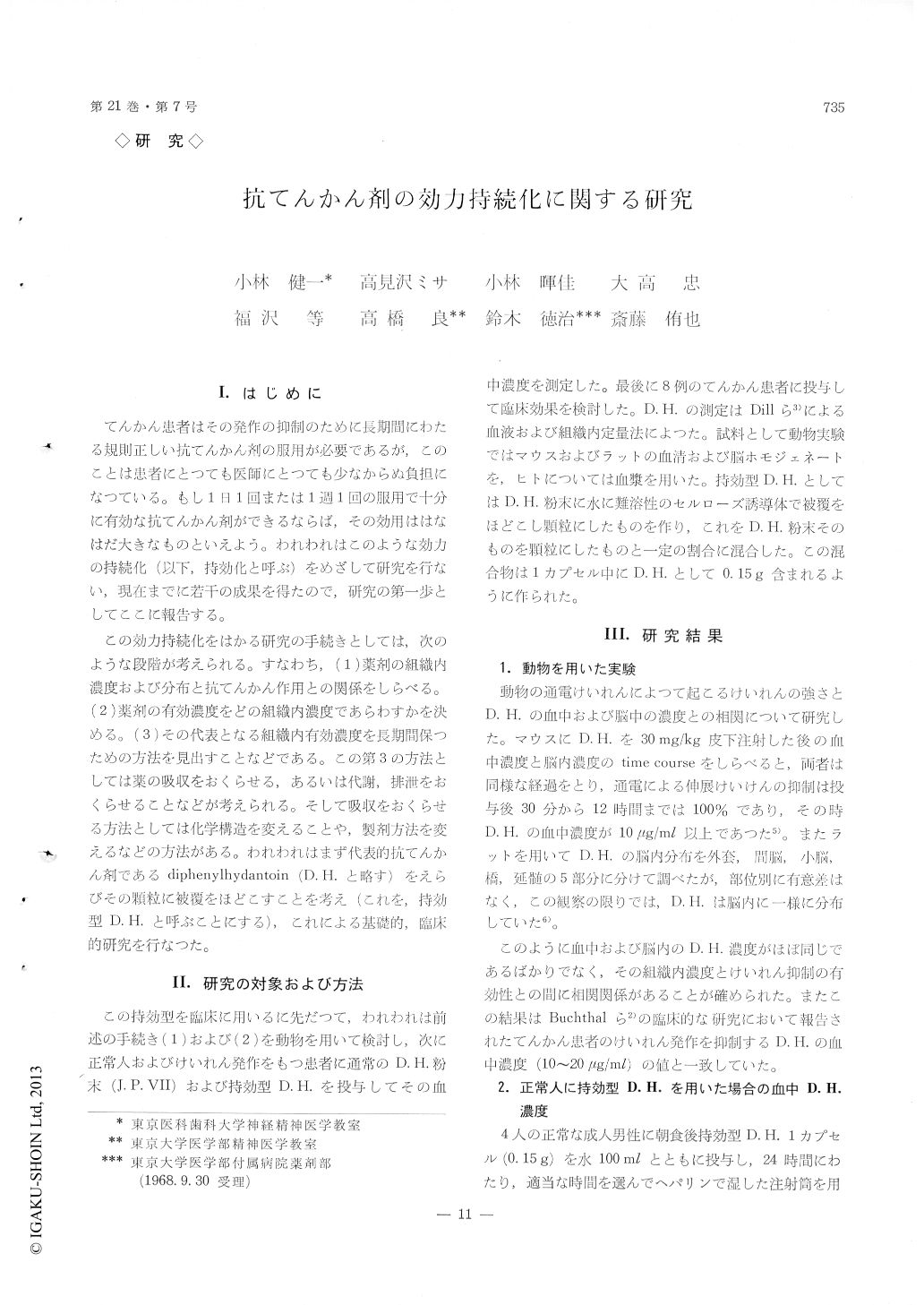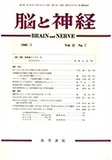Japanese
English
- 有料閲覧
- Abstract 文献概要
- 1ページ目 Look Inside
I.はじめに
てんかん患者はその発作の抑制のために長期間にわたる規則正しい抗てんかん剤の服用が必要であるが,このことは患者にとっても医師にとつても少なからぬ負担になつている。もし1日1回または1週1回の服用で十分に有効な抗てんかん剤ができるならば,その効用ははなはだ大きなものといえよう。われわれはこのような効力の持続化(以下,持効化と呼ぶ)をめざして研究を行ない,現在までに若干の成果を得たので,研究の第一歩としてここに報告する。
この効力持続化をはかる研究の手続きとしては,次のような段階が考えられる。すなわち,(1)薬剤の組織内濃度および分布と抗てんかん作用との関係をしらべる。(2)薬剤の有効濃度をどの組織内濃度であらわすかを決める。(3)その代表となる組織内有効濃度を長期間保つための方法を見出すことなどである。この第3の方法としては薬の吸収をおくらせる,あるいは代謝,排泄をおくらせることなどが考えられる。そして吸収をおくらせる方法としては化学構造を変えることや,製剤方法を変えるなどの方法がある。われわれはまず代表的抗てんかん剤であるdiphenylhydantoin (D.H.と略す)をえらびその顆粒に被覆をほどこすことを考え(これを,持効型D.H.と呼ぶことにする),これによる基礎的,臨床的研究を行なつた。
As a first step of the study on long-acting an-tiepileptic drugs, a sustained release-type of diphenyl-hydantoin (SR-D. H.) was made and the change in blood D. H. concentration after SR-D. H. administra-tion in normal persons and epileptic patients, as well as the clinical effect of SR-D. H. on epileptic patients were studied.
1) After one dose of SR-D. H. was administered, blood concentration of D. H. reached higher level than that after the administration of ordinary D.H. powder.
2) Blood concentration of D. H. decreased rapidly after the daily administration of ordinary powder was withdrawn from one epileptic patient, and increased slowly when daily administration was resumed. On the contrary, this concentration de-creased slowly after the withdrawal of daily admin-istration of SR-D.H., and iucreased rapidly when daily administration was resumed.
3) With SR-D.H., either marked or moderate improvements were seen in four out of five subjects who had epilepsies which were difficult to cure with ordinary anti-epileptic drugs.
4) As for the side effects no difference was ob-served between ordinary D. H. powder and SR-D.H.
In view of these findings a reasonable drug treat-ment of epilepsy was discussed.

Copyright © 1969, Igaku-Shoin Ltd. All rights reserved.


